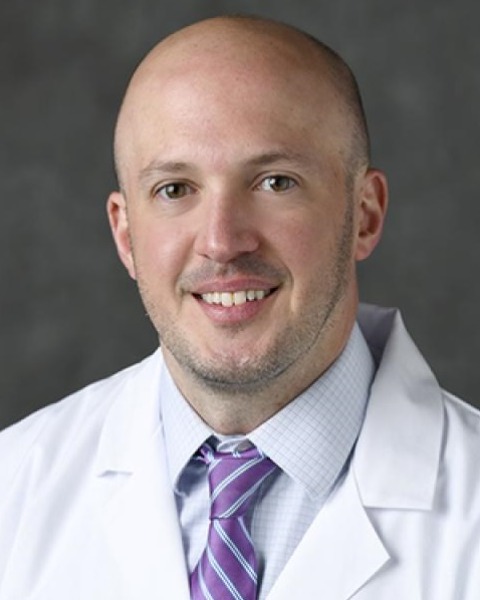Back
Session: Quality and Disparities Parallel Session
66: Q&A
Saturday, March 12, 2022
8:39 AM – 8:41 AM CST
Location: Trinity Ballroom

Christopher T. Aquina, MD, MPH
Colon and Rectal Surgery Fellow
AdventHealth Orlando
Orlando, Florida, United StatesDisclosure: I do not have any relevant financial / non-financial relationships with any proprietary interests.
Abstract Presenter(s)
Participants should be aware of the following financial/non-financial relationships:
Christopher T. Aquina, MD, MPH: I do not have any relevant financial / non-financial relationships with any proprietary interests.
Introduction: Liver-directed therapies (LDT) are important components of the multidisciplinary care of patients with colorectal cancer liver metastases (CRLM) that contribute to improved long-term outcomes. However, factors associated with receipt of LDT are poorly understood.
Methods: Patients >65 years old diagnosed with CRLM were identified within the Medicare Standard Analytic File (2013-2017). Patients with extrahepatic metastatic disease were excluded. Mixed-effects analyses assessed patient factors associated with LDT, defined as hepatectomy, ablation, and/or hepatic artery infusion chemotherapy (HAIC), and outpatient consultation with a hepatobiliary surgeon.
Results: Among 23,484 patients with isolated CRLM, only 2,004 (8.5%) received LDT. Of those who received LDT, 61.7% underwent hepatectomy alone, 28.1% received ablation alone, 8.5% underwent hepatectomy and ablation, and 1.8% received HAIC either alone (0.8%) or in combination with hepatectomy and/or ablation (0.8%). Of those who did not undergo LDT, only 4.7% had outpatient consultation with a hepatobiliary surgeon. Only 114 hospitals were considered high-volume hepatobiliary centers (≥20 annual hepatectomies for malignancy), and the estimated median distance to the nearest high-volume hepatobiliary center for patients was 40.4 miles (IQR=13.7-83.6). Furthermore, only 23 hospitals were identified as providing HAIC, and the median distance to the nearest HAIC center for patients was 130.2 miles (IQR=68.7-247.3). Patient factors independently associated with lower odds of LDT included older age, female sex, Black race, greater comorbidity burden, higher social vulnerability index, primary rectal cancer, synchronous liver metastasis, and further distance from a high-volume hepatobiliary center (p < 0.05) (Table).
Conclusions: Despite the well accepted role of LDT for CRLM, only a small proportion of Medicare beneficiaries with CRLM undergo LDT or receive an outpatient consultation with a hepatobiliary surgeon. Increasing access to specialized centers with expertise in LDT, particularly for Black patients, those with higher levels of social vulnerability, and long travel distances, may improve outcomes for patients with CRLM.
Methods: Patients >65 years old diagnosed with CRLM were identified within the Medicare Standard Analytic File (2013-2017). Patients with extrahepatic metastatic disease were excluded. Mixed-effects analyses assessed patient factors associated with LDT, defined as hepatectomy, ablation, and/or hepatic artery infusion chemotherapy (HAIC), and outpatient consultation with a hepatobiliary surgeon.
Results: Among 23,484 patients with isolated CRLM, only 2,004 (8.5%) received LDT. Of those who received LDT, 61.7% underwent hepatectomy alone, 28.1% received ablation alone, 8.5% underwent hepatectomy and ablation, and 1.8% received HAIC either alone (0.8%) or in combination with hepatectomy and/or ablation (0.8%). Of those who did not undergo LDT, only 4.7% had outpatient consultation with a hepatobiliary surgeon. Only 114 hospitals were considered high-volume hepatobiliary centers (≥20 annual hepatectomies for malignancy), and the estimated median distance to the nearest high-volume hepatobiliary center for patients was 40.4 miles (IQR=13.7-83.6). Furthermore, only 23 hospitals were identified as providing HAIC, and the median distance to the nearest HAIC center for patients was 130.2 miles (IQR=68.7-247.3). Patient factors independently associated with lower odds of LDT included older age, female sex, Black race, greater comorbidity burden, higher social vulnerability index, primary rectal cancer, synchronous liver metastasis, and further distance from a high-volume hepatobiliary center (p < 0.05) (Table).
Conclusions: Despite the well accepted role of LDT for CRLM, only a small proportion of Medicare beneficiaries with CRLM undergo LDT or receive an outpatient consultation with a hepatobiliary surgeon. Increasing access to specialized centers with expertise in LDT, particularly for Black patients, those with higher levels of social vulnerability, and long travel distances, may improve outcomes for patients with CRLM.
Learning Objectives:
- define the proportion of Medicare beneficiaries with colorectal cancer liver metastasis who undergo liver-directed therapy.
- define the proportion of Medicare beneficiaries with colorectal cancer liver metastasis who have outpatient consultation with a hepatobiliary surgeon.
- identify current disparities in the receipt of liver-directed therapy for colorectal cancer liver metastasis.
